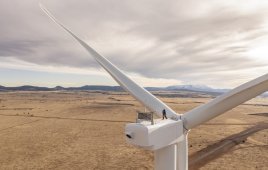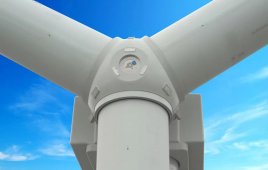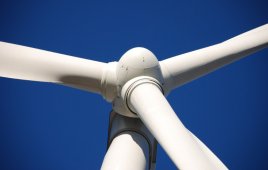
A Carter scanner inspects a short section of a composite layup.
Fiberglass and epoxy-based composites have replaced aluminum and steel as primary materials in the large blades of recent wind turbines. Production of large blades, some of which reach over 50m, also requires increased precision. To improve accuracy and production rates, Carter Products, Grand Rapids, Mich., has introduced its CPS 3D laser alignment equipment. “Hand measuring materials and composite layups have historically been extraordinarily time-intensive,” says Carter Products President Peter Perez. “But we have documented reductions of 50% in labor hours using our alignment systems. With turbine blades backordered for up to two years, this additional automation will help eliminate that bottleneck.”
Carter’s latest laser alignment system, the LP-HFD, boasts of improvements that include capabilities and software for more sophisticated projections. The laser is also available with a green-light output which is more visible in many manufacturing environments. What’s more, the unit is smaller and lighter than previous models.
For blade production, the alignment system provides an interface to industry-standard CAD software. The system extracts layout and production information from the CAD program and projects it onto the work area. The system combines contour templating and computer control to increase accuracy, thereby reducing cycle times, labor costs, and rework. For large components, such as turbine blades, several laser units are linked to project across the entire production area and then tied to a single control. Such a system can provide sequential layup guidelines for the placement of longitudinal and latitudinal sheet material as well as alignment of reinforcements and bracing if required.
Laser Projection Manager (LPM) software can process the graphical data exported from the laser interface. The software visualizes relationships between position, projection height, and object rotation to ensure the greatest projection accuracy at any point in the working field. And for special production requirements not contained in the original CAD program, the company says “teaching” the system is fast and easy. Finally, Carter laser alignment systems also work with CNC machining centers to guide final milling and trimming of the finished blade and other components.

Several scanners can examine an entire blade in a brief period.
Filed Under: Blades, Turbines




